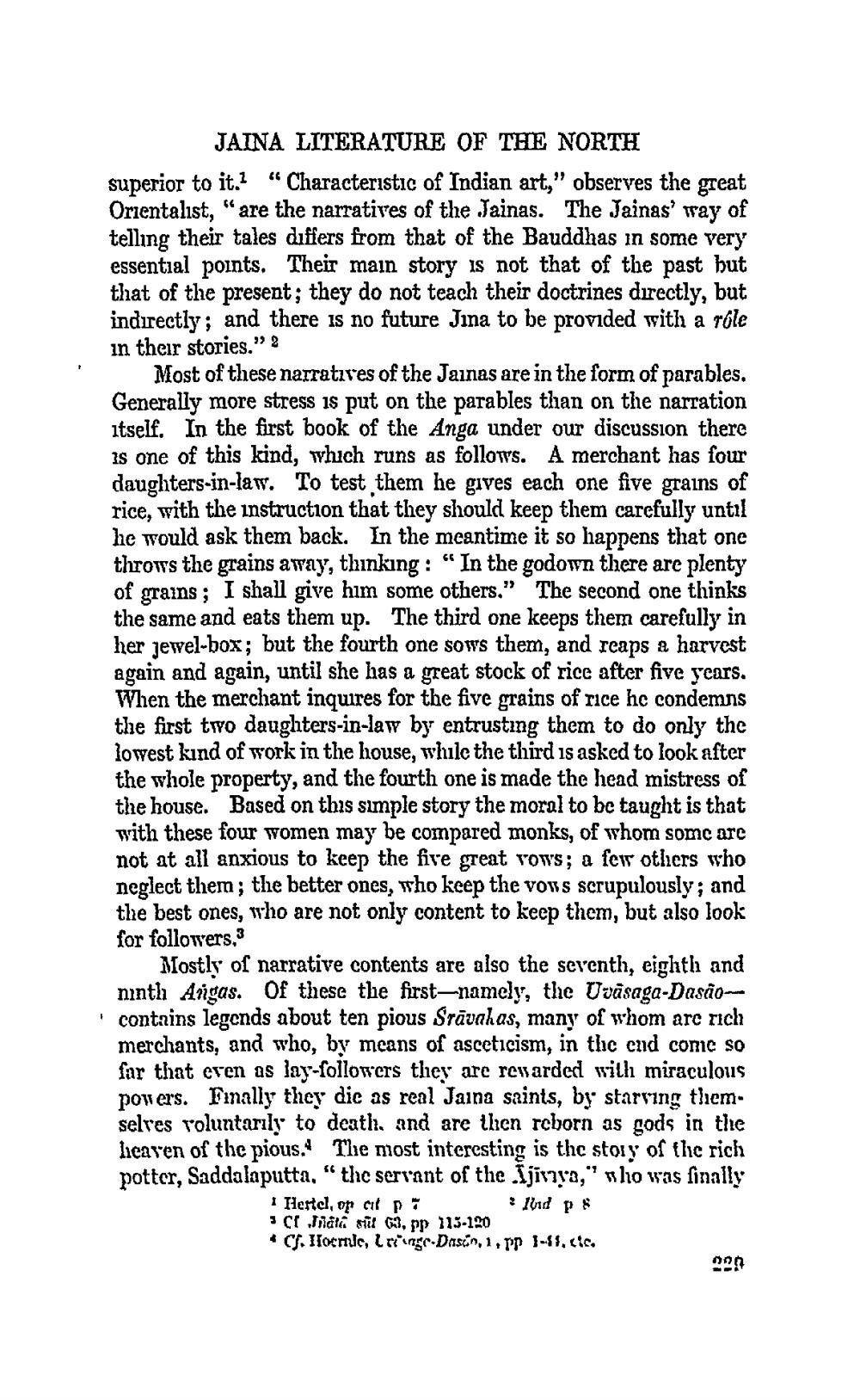________________ ally more stress is pure the Anga under our distant has four JAINA LITERATURE OF THE NORTH superior to it. "Characteristic of Indian art," observes the great Orientalist, "are the narratives of the Jainas. The Jainas' way of telling their tales differs from that of the Bauddhas in some very essential points. Their main story is not that of the past but that of the present; they do not teach their doctrines directly, but indirectly; and there is no future Jina to be provided with a role in their stories." Most of these narratives of the Jainas are in the form of parables. Generally more stress is put on the parables than on the narration itself. In the first book of the Anga under our discussion there is one of this kind, which runs as follows. A merchant has four daughters-in-law. To test them he gives each one five grains of rice, with the instruction that they should keep them carefully until he would ask them back. In the meantime it so happens that one throws the grains away, thinking: "In the godown there are plenty of grains; I shall give him some others." The second one thinks the same and eats them up. The third one keeps them carefully in her jewel-box; but the fourth one sows them, and reaps a harvest again and again, until she has a great stock of rice after five years. When the merchant inquires for the five grains of rice he condemns the first tivo daughters-in-law by entrusting them to do only the lowest kind of work in the house, while the third is asked to look after the whole property, and the fourth one is made the head mistress of the house. Based on this simple story the moral to be taught is that with these four women may be compared monks, of whom some are not at all anxious to keep the five great rows; a few others who neglect them; the better ones, who keep the vows scrupulously; and the best ones, who are not only content to keep them, but also look for followers, Mostly of narrative contents are also the seventh, eighth and ninth Angas. Of these the first namely, the Dvasaga-Dasao contains legends about ten pious Sravahas, many of whom arc rich merchants, and who, by means of asceticism, in the end come so far that eren as lay-followers they are rewarded with miraculous poners. Finally they dic as renl Jaina saints, by starring them. selves voluntarily to death, and are then reborn as gods in the heaven of the pious. The most interesting is the story of the rich potter, Saddalaputtn. " the servant of the Ijivaya," who was finally 1 Tiertel, op cit Jond PR C Jhalte sit 63, pp 113-120 * Cfllocmic, cringe-Dasch, 1. 1-4, ctc.




